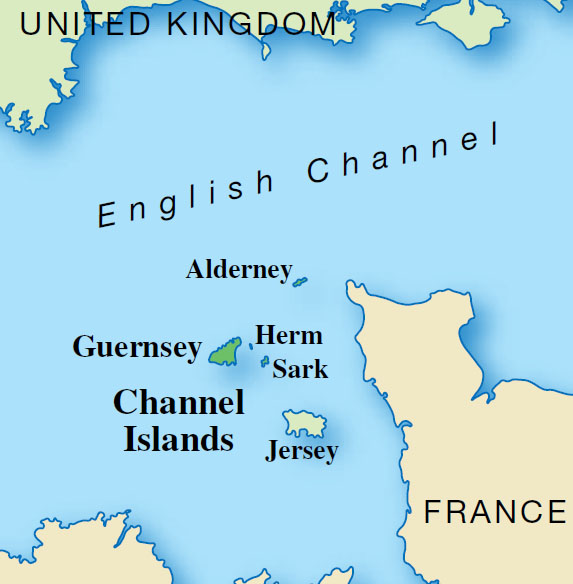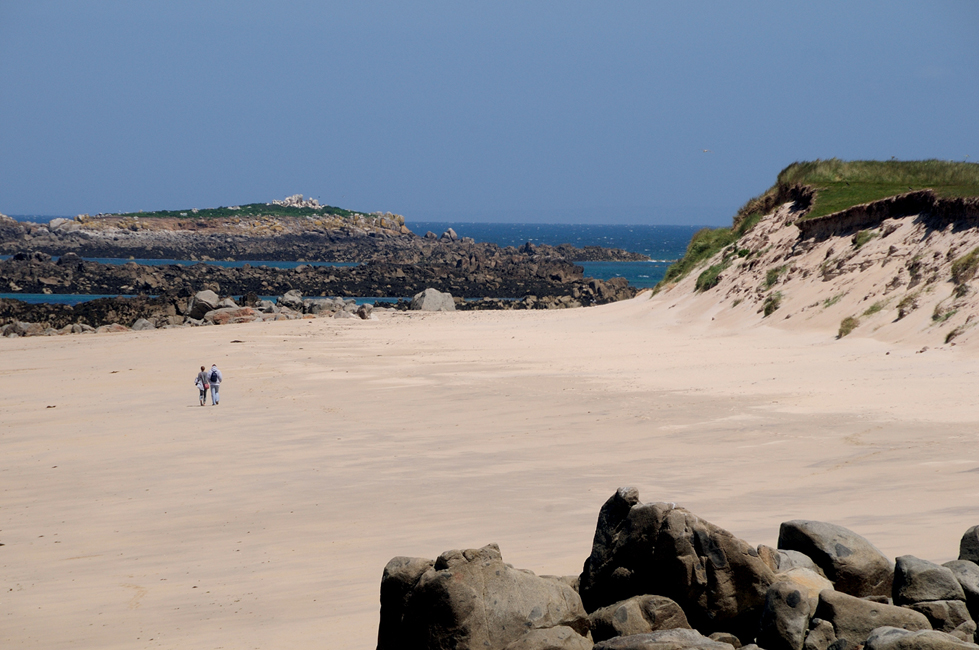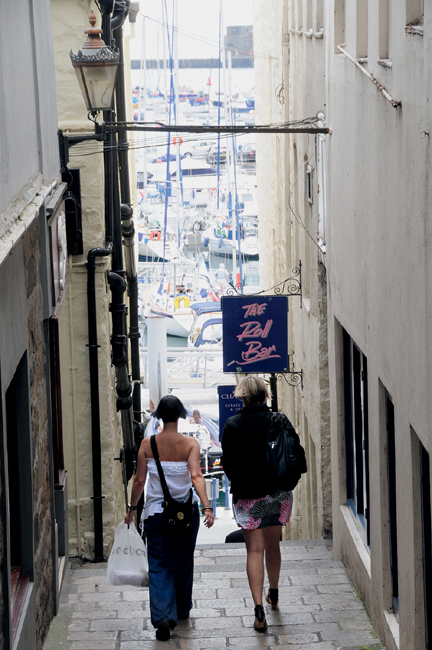
Overview: Guernsey
Guernsey and its tiny sister islands lie in the Gulf of St Malo and have a distinct Gallic twist. Expect beautiful bays, superb seafood and the sunniest climate in the British Isles
When French novelist Victor Hugo was exiled in 1851, he thought long and hard about where to make his new home. Since he spoke only French, he wanted to live somewhere where French was understood. He finally chose the Channel Islands because they were ‘morsels of France fallen into the sea and gathered up by England’.

White sands of Mouisonniere Beach, Herm.
Mockford and Bonetti/Apa Publications
If Hugo felt perfectly at home in the Channel Islands, so did the numerous British and Irish army officers and colonial servants who chose to settle here in the 19th century. The addition of new Anglian and Celtic ingredients to the existing French culture resulted in a mix that makes the islands feel reassuringly familiar, yet still exotic.
‘Similar but different’ is a phrase that could also describe the way that Jersey and Guernsey seek to differentiate themselves from each other. They each issue their own currencies, phonecards and postage stamps, none of which are valid on the mainland. Letter boxes are different colours (red on Jersey, blue on Guernsey) and each claims its version of the classic knitted fisherman’s jumper. Guernsey people rarely refer to Jersey by name: to them, it is ‘the other island’. They refer to its inhabitants, only half in jest, as crapauds (toads) – because the toad is found on Jersey but not on Guernsey. With their slower pace of life Guernsey people are dismissed as ânes (donkeys) by their bigger-island rivals.
LOCATION AND CLIMATE
As a group the islands sit just off the Cherbourg peninsula. With an area of 24 sq miles (62 sq km), and a population of around 63,000 Guernsey is the second biggest of the Channel Islands after Jersey, but the more densely populated. The Bailiwick of Guernsey consists of Guernsey, the islands of Herm, Jethou, Sark and Alderney, and a number of scattered lighthouse rocks and islets, such as Burhou, Ortac and the Casquets. The tiny islands of Herm (20 minutes by ferry) and Sark (45 minutes) are peaceful retreats, with sandy beaches and dramatic clifftop scenery. Sark’s 450-year-old feudal system came to an end in 2008 when the Chief Pleas (legislative body) was reformed, the first general election was held and Sark became Europe’s newest democracy. Alderney is the northernmost of the Channel Islands, just 8 miles (13km) from France. It was deliberately depopulated during the war, and used as a forced labour camp. Community life has been successfully rebuilt since the island’s liberation in 1945; Alderney is now popular with ornithologists and beach lovers looking for privacy and a peaceful escape from the busy world.

Walking down Pier Steps in St Peter Port.
Visit Guernsey

Alderney’s Mannez Lighthouse has great views from its lantern.
Visit Guernsey
The Channel Islands are mild in winter and sunny in summer, but strong winds can make temperatures feel cool. In the summer months the islands have a daily average of eight hours of sunshine and an average maximum temperature of 68˚F (20˚C). The Atlantic sea temperatures are cool for swimming, averaging 62.8˚F (17.1˚C) in summer.
BRITISH LINKS
Although they are not truly British, the Channel Islands have been linked with the British Crown for over 900 years. Self-government was granted to the islands by King John in 1204, as a reward for staying loyal to the English Crown after the rest of Normandy was conquered by King Philippe II of France. Ever since the islands have pledged allegiance to the English Crown, and as the last remaining territories of the dukes of Normandy, they toast the Queen of England as ‘Our Duke of Normandy’. The islands delegate matters of foreign policy and defence to the UK parliament, but in all other affairs – especially in taxation and financial policy – they guard their independence zealously.
ECONOMY
Guernsey saw major changes during the late 20th century as the financial services industry took over from agriculture and tourism as the mainstay of the economy. The sector is now completely dominant, generating about 40 percent of the island’s economic output and £105 million a year in tax. The almost complete absence of taxes on capital makes the islands very attractive to wealthy incomers, and to the banking community. Traditional activities such as dairy farming and fishing still continue and recent years have seen a surge in small-scale producers such as cheese-makers, organic farmers and specialist pig breeders.
Tourism saw its heyday in the 1950s and 1960s when railway workers flocked over with their free ferry tickets. Today the emphasis is on up-market short breaks, heritage, gastronomy and traditional leisure activities. And Guernsey wants to keep it that way, with no theme parks and no Starbucks. Numbers of overnight visitors have dropped in the last year or so but day visitor numbers have been boosted by visiting cruiseships.
Tides
The islands have one of the largest tidal movements in the world; the change between high and low water almost doubles the size of the islands. Powerful tides expose huge areas of rock pools and clean, sandy and rarely crowded beaches. Fishermen forage along the foreshore for the lobsters, mussels, clams and oysters that end up being served as plateaux de fruits de mer in the island’s many seafood restaurants.
ENVIRONMENT
The coastal fringes have their own distinctive wildlife, from the puffins and gannets that nest on the offshore islets, to the sea kale, horned poppy and sea holly that grows on the dunes. On Guernsey the island of Lihou and nearby nature reserves have been designated as a Ramsar site (a wetland of international importance). This large intertidal zone has a rich biodiversity of flora and fauna.
Green lanes on Guernsey, called Ruettes Tranquilles, have reduced the speed limit on country lanes to 15mph (24kph) and encourage cyclists and pedestrians. On the other hand, Guernsey has one of the highest car ownership rates in the world, and the amount of traffic and parking problems may deter you from driving.

Cycling is the main form of transport on Sark.
Visit Guernsey